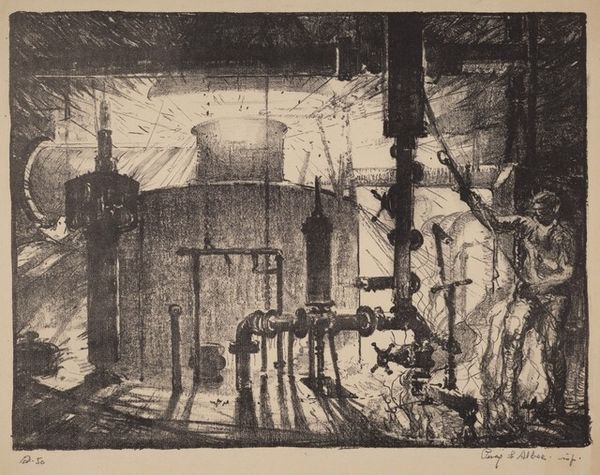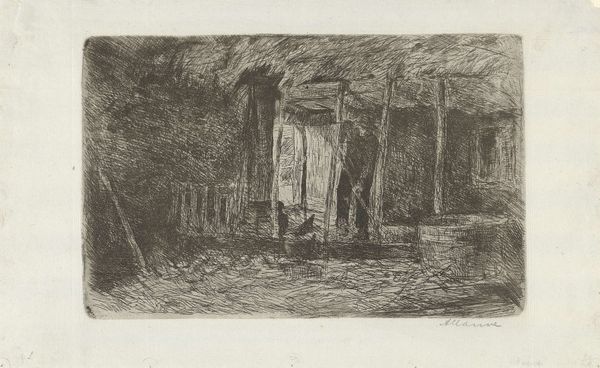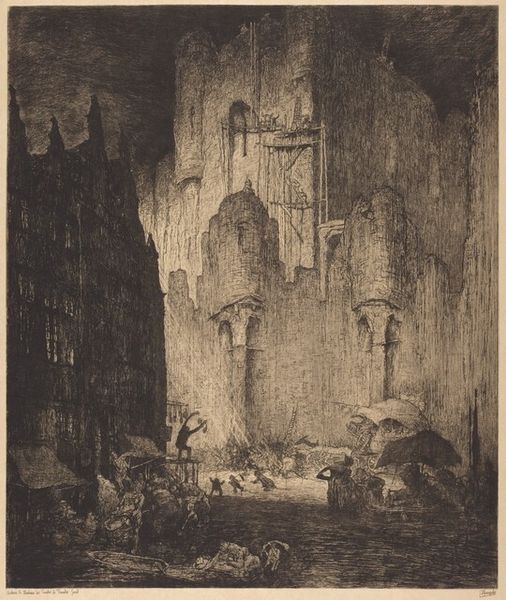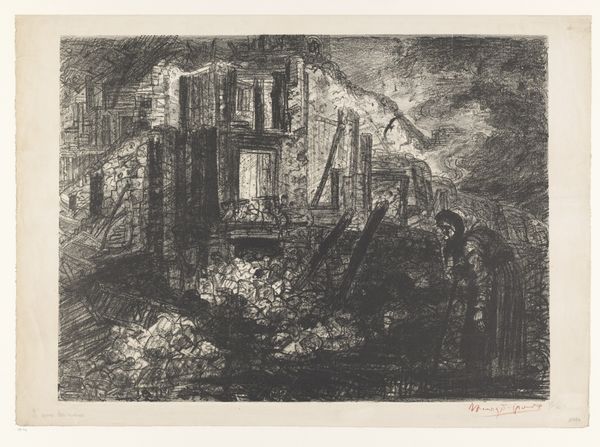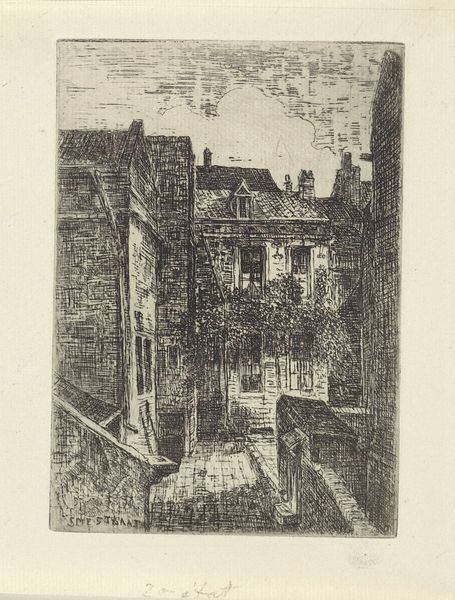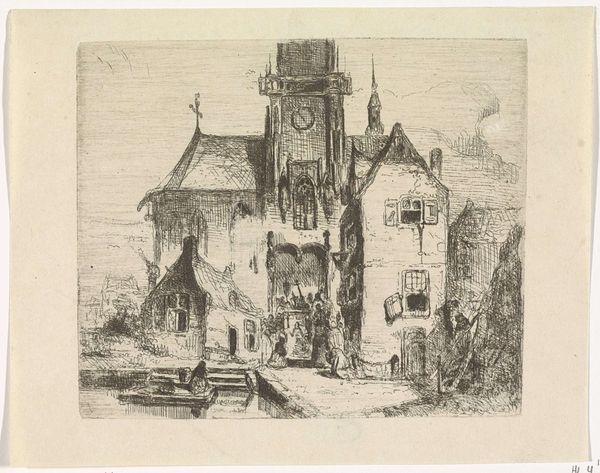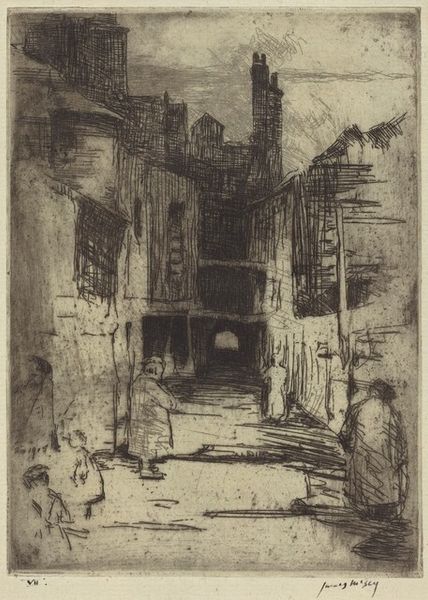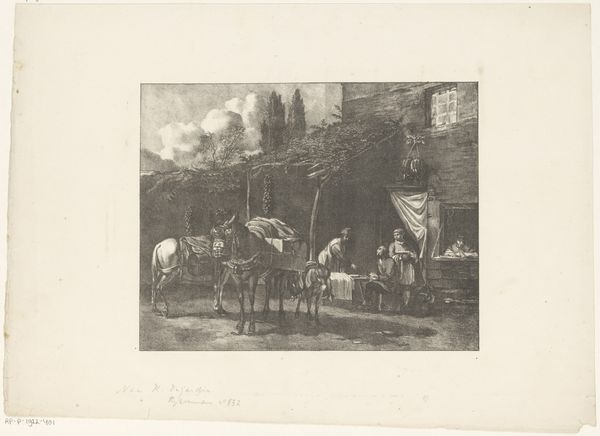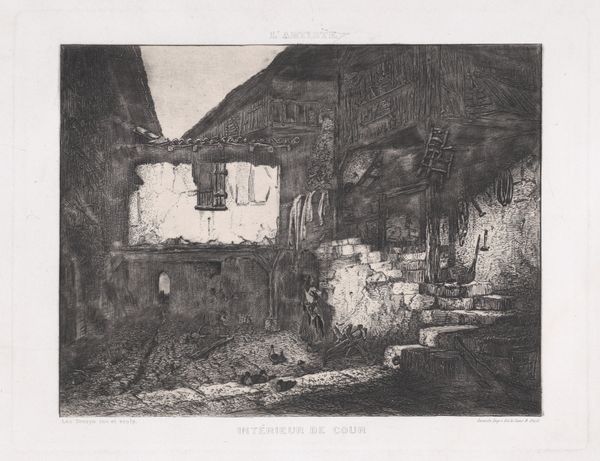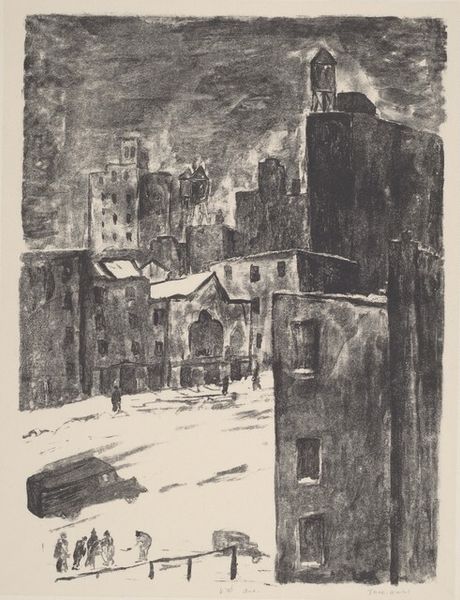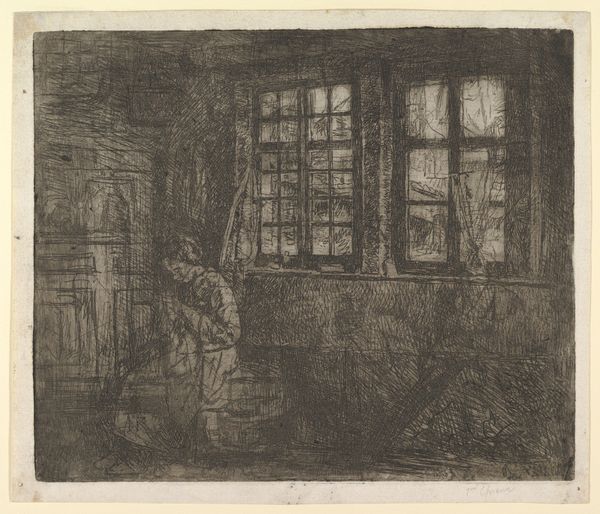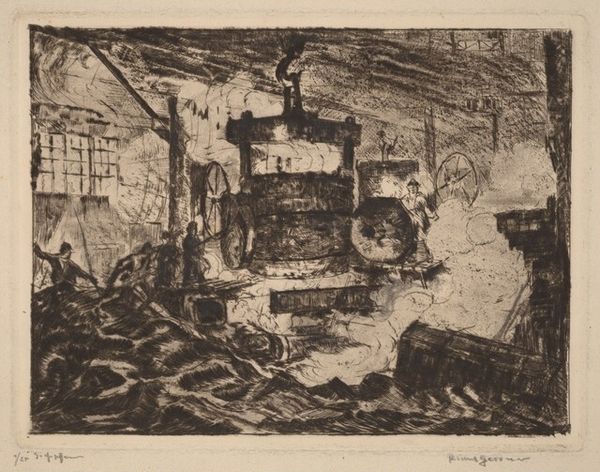
print, etching
# print
#
etching
#
figuration
#
ashcan-school
#
cityscape
#
genre-painting
#
realism
Dimensions: plate: 13.34 × 17.78 cm (5 1/4 × 7 in.)
Copyright: National Gallery of Art: CC0 1.0
Curator: John Sloan's 1910 etching, "Night Windows," presents a peek into urban life, showcasing several illuminated windows against a dark, densely hatched cityscape. What strikes you initially about this print? Editor: The dense network of etched lines really conveys a feeling of grittiness, an urban nocturne captured through laborious technique. You can almost smell the laundry hung out to dry! Curator: The Ashcan School, with which Sloan is associated, sought to depict everyday realities. Do the scenes within these windows hint at anything deeper, though? Do they tell a story? Editor: Absolutely, each window functions like a framed glimpse into working-class lives – a woman hanging laundry, another staring out into the night. I think it's critical to consider the material reality here: the cramped apartments, the endless labor visualized through the repetitive action of etching. Curator: The symbolism is rather loaded. The figure perched on the rooftop above evokes the voyeur, and this sense of hidden observation repeats itself through the windows, which represent many worlds unseen within their lighted rectangular boundaries. Editor: Indeed, the production of these kinds of prints was relatively affordable, circulating these images widely and shaping perceptions of urban existence for a growing public. What was shown—the 'gritty realism,' you say—and who was allowed to see it, became crucial social commentary. Curator: Ultimately, in the glow of windows there are symbols of hope and human existence; their shared living experience stands in stark contrast against the somber setting surrounding it all. Editor: I’m stuck by the materiality. Sloan didn’t simply *see* these things, but reproduced them with laborious, physical actions. We can trace the networks of social looking reproduced materially by the means of etching and distributing prints. Curator: It’s a lasting and relevant illustration, indeed, highlighting our tendency to read stories and significance even into our daily landscapes. Editor: By foregrounding process, class, and making, the work really urges to think more deeply about who produces visual narratives.
Comments
No comments
Be the first to comment and join the conversation on the ultimate creative platform.
